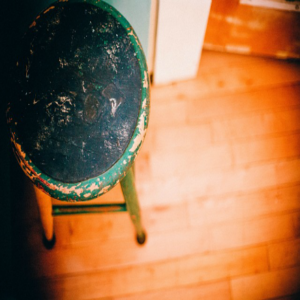Finishing and Maintaining Wood Floors
Part 6 –Protecting and Repairing the Finish

Protecting the Finish
For the final touch of beauty and to protect the finish, apply one or more coats of good wax recommended for use on floors. Use either a liquid buffing wax/cleaner or paste wax. Use only brands that are designated for hardwood floors and if a liquid, be sure it has a solvent base, not a water base. Apply the wax after the finish coat is thoroughly dry and polish it with a machine buffer. The wax will give a lustrous sheen to the floor and form a protective film that prevents dirt from penetrating the finish. Some manufacturers of urethane finishes do not recommend waxing, especially for commercial jobs, because wax tends to make floors slippery.
Repairing the Finish
Wood floors finished with penetrating seals are not too difficult to repair should they show early signs of wear in traffic channels or become stained or water damaged in localized areas. Floors finished with polyurethane or varnish can also be repaired, but lap marks or a splotchy appearance are more difficult to avoid. Floors finished with lacquer or shellac are nearly impossible to repair.
Finishes are best renewed when they begin to show signs of wear in traffic channels but before the bare wood is exposed. In this case, the floor must be cleaned of all dirt and debris, and all floor wax must be removed as it may interfere with the drying and adhesion of any new finish. Most of the wax can be stripped with rags kept moistened with mineral spirits or other paint thinners. The rest of the wax should be washed off with soap and warm water, doing the work as rapidly as possible so that the water will have little time to contact the wood. After the surface has thoroughly dried, a new finish may be applied.
If a penetrating seal is being restored, apply it to the worn areas as already described. Be careful to wipe up any excess, particularly in those areas where the old finish is still in good condition. If a surface finish such as polyurethane or varnish is being used, it may be a good idea to apply one coat of finish to the worn areas first. End all brush strokes at joints between boards. After the first coat is thoroughly dry, apply a second coat over the entire floor.
If only a small stained or water damaged area is being repaired, try to remove the discoloration first. Use steel wool or a fine grade of sandpaper to smooth out the affected area and an inch or two of the surrounding floor. Remove all dust. Then brush on one or more thin coats of finish, featuring it into the old finish to prevent lap marks. Allow plenty of time for drying between coats. Wax the repaired area if appropriate.
Note: This information was reproduced in part from D.L. Cassens and W.C. Feist. North Central Regional Extension Publication #136.
Meet the Author
Dr. Todd Shupe is the President of Wood Science Consulting, LLC. He is a well-recognized expert on wood forensics, wood preservation, wood decay and degradation, and wood species identification. He has a broad background in new product development, quality management, and marketing and sales in both the public and private sectors. For more information please visit DrToddShupe.com.
We welcome your comments below.
Thank you for visiting. We trust that you have enjoyed reading our articles.
Liked this post? Read more below or search for more topics . . .

